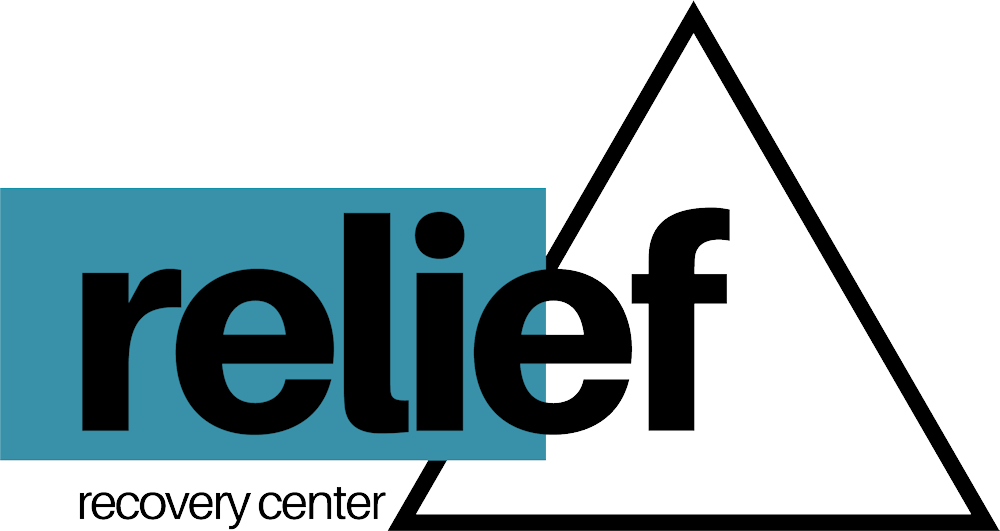Navigating the Complex Journey of Addiction Recovery: An Insight into Post-Acute Withdrawal Syndrome
Recovery from addiction is a multifaceted journey, encompassing more than just the cessation of substance use. It’s a path of healing, understanding, and re-learning, often filled with both challenges and triumphs. Among these challenges is a lesser-known but significant phase known as Post-Acute Withdrawal Syndrome (PAWS), a crucial aspect of the recovery process that is often overshadowed by the initial detoxification stage.
PAWS represents a set of symptoms that persist well beyond the initial withdrawal phase, marking a critical transition in the long-term recovery journey. These symptoms, predominantly psychological and emotional, can have a profound impact on an individual’s ability to navigate their new, substance-free life. While the acute withdrawal phase is often discussed and understood, PAWS remains a topic less explored, yet equally important in the context of sustained recovery and relapse prevention.
In this comprehensive guide, we delve into the intricacies of Post-Acute Withdrawal Syndrome, offering insights and strategies to manage this challenging yet manageable stage of recovery. From understanding the symptoms and their impact on mental health to exploring effective management strategies, this article aims to shed light on this vital aspect of addiction recovery. Whether you are someone journeying through recovery, a caregiver, or simply seeking knowledge, understanding PAWS is a step forward in supporting the journey towards a healthier, substance-free life.
Understanding Post-Acute Withdrawal Syndrome (PAWS)
Decoding the Extended Battle: Beyond Acute Withdrawal
In the realm of addiction recovery, understanding the nuances of Post-Acute Withdrawal Syndrome (PAWS) is crucial. This syndrome represents a collection of symptoms that emerge after the initial, more intense acute withdrawal phase, typically associated with the physical dependence on substances like alcohol, opioids, or benzodiazepines. PAWS, however, shifts the focus from the physical to the psychological and emotional aftermath of addiction.
The Nature of PAWS
PAWS is characterized by a range of symptoms that significantly differ from those of acute withdrawal. While the latter is often short-lived, lasting from a few days to a couple of weeks, PAWS can persist for months or even years. This prolonged duration underscores the deep impact substance abuse has on the brain’s chemistry and function. Symptoms can fluctuate in intensity and often include emotional instability, anxiety, depression, sleep disturbances, and a persistent craving for the substance.
Why PAWS Occurs
The occurrence of PAWS is primarily due to the brain’s effort to recalibrate and return to its pre-addiction state. Long-term substance abuse alters the brain’s chemical balance, affecting neurotransmitters responsible for feelings of pleasure, well-being, and stability. As the brain works to restore its natural equilibrium, individuals experience the psychological and emotional turbulence that characterizes PAWS.
Understanding the Impact
Recognizing and understanding PAWS is a critical step in the recovery process. It provides insight into why certain symptoms persist long after physical dependence has ceased and highlights the importance of continued support and treatment. By acknowledging PAWS, individuals in recovery, and those supporting them, can better prepare for and manage these ongoing challenges.
Symptoms of Post-Acute Withdrawal Syndrome
Navigating the Emotional and Psychological Terrain of Recovery
The journey through Post-Acute Withdrawal Syndrome (PAWS) is marked by a variety of symptoms that are predominantly psychological and emotional in nature. Unlike the physical symptoms of acute withdrawal, these symptoms can be more subtle yet pervasive, profoundly affecting an individual’s recovery journey.
Common Symptoms of PAWS
- Emotional Instability: Fluctuations in mood, ranging from intense irritability to sudden bouts of sadness or euphoria, are common. This emotional rollercoaster can be challenging to manage and understand.
- Anxiety and Panic Attacks: Persistent anxiety or the emergence of panic attacks can be a distressing aspect of PAWS, often leading to a heightened state of nervousness and worry.
- Depression: Feelings of deep sadness, hopelessness, or a lack of interest in previously enjoyed activities can be a significant barrier to recovery.
- Sleep Disturbances: Insomnia or irregular sleep patterns are frequent, impacting overall health and well-being.
- Impaired Cognitive Functions: Difficulty in concentrating, memory lapses, and a general sense of mental fog can hinder day-to-day activities and work.
- Fatigue and Low Energy: A persistent feeling of tiredness and lack of energy can be demotivating and impact daily functioning.
- Cravings: Despite the physical dependency being resolved, cravings for the substance can continue, posing a risk for relapse.
- Increased Sensitivity to Stress: Ordinary stressors can feel overwhelming, making coping more difficult.
Substance-Specific Symptoms
The nature of these symptoms can also vary based on the substance from which the individual is recovering. For instance, opioid withdrawal may be characterized more by depression and cravings, while recovery from stimulants like methamphetamine may involve severe mood swings and sleep disturbances.
Understanding and Acknowledging the Symptoms
Recognizing these symptoms as part of PAWS is crucial for individuals in recovery and their support networks. Understanding that these symptoms are a normal part of the recovery process can reduce the frustration and confusion often felt during this stage. In the next sections, we will delve into the typical duration of PAWS and the factors influencing its severity, followed by strategies for managing these challenging symptoms.
Duration and Severity of PAWS
Understanding the Timeline of Post-Acute Withdrawal Syndrome
The duration and severity of Post-Acute Withdrawal Syndrome (PAWS) can vary greatly among individuals. Several factors influence this variability, making each person’s experience with PAWS unique.
Factors Affecting Duration and Severity
- Type of Substance: Different substances lead to different PAWS experiences. For example, opioids often cause longer-lasting emotional symptoms compared to other substances.
- Duration of Use: Longer periods of substance abuse typically result in more prolonged PAWS.
- Amount of Substance Used: Higher doses of substances can lead to more severe PAWS symptoms.
- Individual Health Factors: Overall physical and mental health plays a crucial role. Pre-existing mental health conditions can intensify PAWS symptoms.
- Support and Treatment: Access to support networks and effective treatment can significantly reduce the severity and duration of PAWS.
Typical Timeline
While PAWS can last from several months to a couple of years, the most intense symptoms usually occur in the first few months of recovery. As time progresses, these symptoms generally become less frequent and less intense. This gradual improvement highlights the brain’s ability to heal and adapt over time.
Navigating the PAWS Timeline
It’s important to remember that recovery is a personal journey. Comparing one’s progress to others can lead to unnecessary frustration. Acknowledging the variability in PAWS duration and severity helps individuals set realistic expectations for their recovery process.
In the next section, we will explore effective strategies for managing PAWS, focusing on practical steps to mitigate symptoms and support long-term recovery.
Managing Post-Acute Withdrawal Symptoms
Effective Strategies for Navigating PAWS
Successfully managing Post-Acute Withdrawal Syndrome (PAWS) is key to a smooth recovery journey. By adopting certain strategies, individuals can significantly alleviate the symptoms of PAWS and improve their overall well-being.
1. Seek Professional Guidance
- Engaging with healthcare professionals provides access to vital resources and tailored advice. Regular consultations can help monitor and adjust treatment plans as needed.
2. Build a Strong Support Network
- Surrounding oneself with understanding friends, family, or support groups creates a nurturing environment. This support is invaluable during challenging moments.
3. Practice Healthy Living
- A balanced diet, regular exercise, and adequate sleep contribute greatly to physical and mental health. These habits can lessen the severity of PAWS symptoms.
4. Develop Coping Skills
- Learning and practicing stress-management techniques, such as mindfulness and relaxation exercises, can help manage anxiety and mood swings.
5. Engage in Therapeutic Activities
- Activities like art, music, or nature walks offer therapeutic benefits. They provide a positive outlet for emotions and stress.
6. Set Realistic Goals
- Establishing achievable goals gives a sense of purpose and direction. Celebrating small victories can boost morale and motivation.
7. Avoid Triggers
- Identifying and avoiding situations or people that trigger cravings or negative emotions is crucial. This step helps maintain focus on recovery.
8. Stay Informed
- Understanding PAWS and being aware of its symptoms enables better self-management and prepares one for potential challenges.
Combating Relapse Risks
While managing PAWS, it’s also vital to be mindful of relapse risks. Recognizing early signs of relapse and seeking help promptly can prevent setbacks. Staying committed to the recovery plan and utilizing available resources enhances resilience against potential relapse.
PAWS and Mental Health
Addressing the Psychological Challenges in Recovery
The intersection of Post-Acute Withdrawal Syndrome (PAWS) and mental health is a critical aspect of the recovery process. PAWS can significantly affect an individual’s psychological well-being, making it essential to address mental health alongside physical recovery.
1. Recognizing the Impact on Mental Health
- Symptoms like depression, anxiety, and mood swings are not just challenging; they’re indicators of the ongoing mental health journey in recovery. Understanding this connection helps in seeking appropriate care.
2. Dealing with Co-occurring Disorders
- Many individuals in recovery also contend with co-occurring mental health disorders. Addressing these alongside PAWS is key to a holistic recovery. Treatment plans should encompass both substance abuse and mental health care.
3. The Role of Therapy
- Engaging in therapy, whether individual or group sessions, offers a safe space to explore and address emotional and psychological challenges. Therapists can provide coping strategies and tools tailored to individual needs.
4. Medication Management
- In some cases, medication may be necessary to manage certain mental health conditions during recovery. Consulting with healthcare professionals ensures safe and effective use of any medication.
5. Prioritizing Self-Care
- Self-care practices, like mindfulness, journaling, or engaging in hobbies, play a vital role in managing mental health. They provide an outlet for stress and contribute to overall emotional well-being.
6. Building Emotional Resilience
- Developing resilience is a gradual process. It involves learning to handle stress and emotional upheaval in healthy ways, crucial for long-term recovery.
The Path Forward
Navigating PAWS requires not only a focus on physical abstinence but also a deep commitment to mental health. By addressing the psychological aspects of recovery, individuals can build a more robust foundation for a sustained, substance-free life.
Embracing the Journey Towards a Healthier Life
Overcoming PAWS: A Key Step in Sustained Recovery
As we’ve explored, Post-Acute Withdrawal Syndrome (PAWS) is a complex but manageable phase of the recovery process. By understanding and addressing both the physical and psychological aspects of PAWS, individuals in recovery can significantly enhance their chances of long-term success.
Remember, recovery is a personal and non-linear journey. Each step, each challenge, and each victory brings you closer to a healthier, substance-free life. While PAWS can be a daunting phase, it’s also a testament to the incredible resilience and strength that lies within each individual on this path.
Take the Next Step with Relief Recovery Center
If you or a loved one is navigating the challenges of PAWS, know that you’re not alone. At Relief Recovery Center, we understand the intricacies of addiction recovery and are dedicated to providing comprehensive support and care.
Here’s What We Offer:
- Personalized Care Plans: Tailored to meet your unique needs during recovery.
- Expert Medical Supervision: Ensuring safe and effective management of withdrawal symptoms.
- Therapeutic Support: Including individual and group therapy sessions to address mental health and emotional well-being.
- Holistic Approaches: Incorporating nutrition, exercise, and mindfulness into the recovery process.
- Ongoing Support Networks: Connecting you with a community of peers and professionals for continuous encouragement.
Embark on Your Recovery Journey with Us
At Relief Recovery Center, we believe in empowering individuals to reclaim their lives from addiction. Our compassionate team is here to guide and support you every step of the way.



